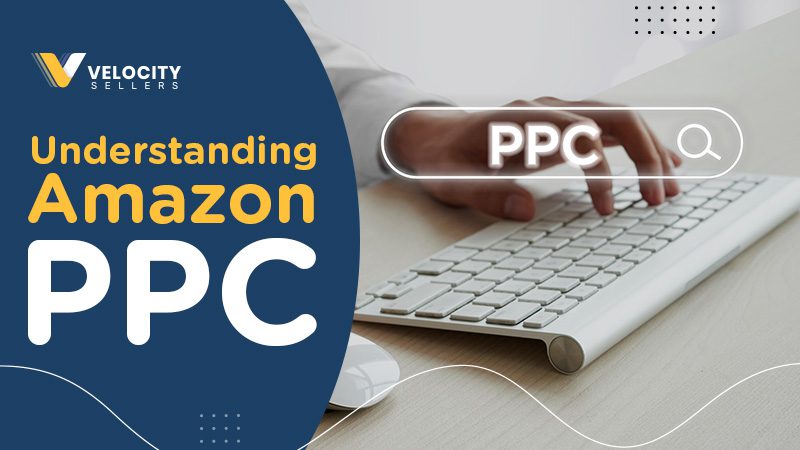In today’s fiercely competitive e-commerce landscape, having a solid marketing strategy is crucial for success. One of the most powerful tools at your disposal is Amazon Pay-Per-Click (PPC) advertising. With over 2.5 million sellers and millions of products on Amazon, it’s essential to stand out and capture the attention of potential customers. That’s where mastering Amazon PPC comes in.
Amazon PPC advertising allows you to drive targeted traffic to your products, increase visibility, and ultimately boost sales on the world’s largest e-commerce platform. It’s a dynamic and effective marketing tool that empowers sellers to promote their products strategically. By bidding on specific keywords relevant to your products, your sponsored ads can appear prominently in search results and product detail pages, capturing the attention of shoppers actively searching for products like yours.
The Importance of Amazon PPC:
To truly understand the importance of mastering Amazon PPC advertising, let’s take a look at some compelling statistics and examples:
Increased Sales and Revenue:
According to a survey by Kenshoo, Amazon PPC advertising led to a 54% increase in sales for sellers who optimized their campaigns. With the right strategies, sellers can drive more conversions, boost revenue, and achieve their business objectives.
Enhanced Product Visibility:
A study by Jungle Scout found that 70% of Amazon customers never scroll past the first page of search results. By leveraging Amazon PPC, you can secure prominent placements for your products, increasing their visibility and capturing the attention of potential buyers.
Targeted and Relevant Traffic:
Amazon PPC allows you to target your ideal customers precisely based on their search terms, interests, and behaviors. This targeted approach ensures that your ads are shown to individuals actively searching for products like yours, maximizing the chances of conversions and minimizing wasted ad spend.
Competitive Advantage:
By mastering Amazon PPC, you can gain a competitive edge over other sellers in your niche. A well-optimized PPC campaign can help you outrank competitors, attract customers who might have otherwise chosen their products, and establish your brand as a leader in the marketplace.
In the following sections, this step-by-step guide will equip you with the knowledge and techniques to optimize your Amazon PPC campaigns and drive exceptional results.
Understanding Amazon PPC:

- What is Amazon PPC, and how does it work?
- Benefits of using Amazon PPC for your business.
- Different types of Amazon PPC campaigns: Sponsored Products, Brands, and Sponsored Display.
Amazon Pay-Per-Click (PPC) advertising is a dynamic and effective marketing tool that allows sellers to promote their products on the Amazon platform. Amazon PPC works on a bidding system where sellers bid on specific keywords relevant to their products. When a shopper searches for a product using those keywords, the sponsored ads appear prominently in the search results or product detail pages.
The benefits of using Amazon PPC for your business are numerous. Firstly, it enables you to increase your product’s visibility and reach a wider audience of potential customers. You gain valuable exposure by appearing at the top of search results or on relevant product pages, increasing sales and brand recognition.
Amazon offers various types of PPC campaigns to suit different advertising goals. Sponsored Products campaigns allow you to promote individual products, displaying them alongside organic search results. Sponsored Brands campaigns let you showcase your brand logo, custom headline, and multiple products, providing brand awareness and driving traffic to your brand’s storefront or product listing. Sponsored Display campaigns target relevant audiences on and off Amazon, helping you reach customers beyond the Amazon platform.
Understanding the intricacies of each campaign type is crucial to maximizing the effectiveness of your advertising efforts on Amazon. In the subsequent sections of this guide, we will delve deeper into each campaign type, exploring best practices and strategies to optimize your Amazon PPC campaigns for optimal results.
To see how these campaign types fit into a broader growth strategy, check out our Amazon Advertising Strategy: Ultimate Guide to Boosting Sales for advanced tips on structuring, scaling, and optimizing Amazon PPC success.
Keyword Research:

- The importance of thorough keyword research.
- Tools and techniques for finding relevant and high-converting keywords.
- Using Amazon’s keyword tools and third-party keyword research tools.
- Analyzing competitor keywords for insights.
Comprehensive keyword research goes beyond mere identification; it enables you to uncover high-demand, low-competition keywords that have the potential to generate significant traffic and increase conversions. You can identify valuable keywords that align with your business objectives by meticulously exploring different keyword variations and analyzing search volume and competition metrics. These keywords act as a bridge, connecting your products with customers actively seeking what you have to offer.
Furthermore, thorough keyword research allows you to stay ahead of the competition. By gaining insights into the language and search terms your competitors are targeting, you can identify gaps in the market and discover untapped opportunities. This knowledge empowers you to refine your keyword selection and develop a more targeted and effective Amazon PPC campaign that stands out.
Keyword research is an ongoing process that maximizes the impact of your Amazon PPC efforts and uncovers hidden opportunities for success.
You can usevant and high-converting keywords. Ama to find relevant and high-converting keywordszon’s keyword tools provide valuable insights into popular search terms and suggested keywords tailored to the Amazon platform. Third-party keyword research tools can offer comprehensive keyword data and competitor analysis, helping you uncover hidden opportunities.
Here are some tools:
Amazon’s Keyword Tools:
- Amazon Autocomplete: The autocomplete feature in the Amazon search bar provides real-time suggestions based on popular searches, giving insights into commonly used keywords.
- Customers Who Bought This Also Bought: Analyzing the “Customers Who Bought This Also Bought” section on product listings can reveal keywords customers use when purchasing related products.
Third-Party Keyword Research Tools:
- Jungle Scout: Provides comprehensive keyword research data, including search volume, competition, and related keywords, to help you uncover relevant Amazon keywords.
- Helium 10: Offers keywords research tools like Magnet and Cerebro, which provide in-depth keyword data, including search volume, trends, and competitor analysis.
- AMZScout: Provides keyword research functionality, including search volume and related keywords, to assist in finding profitable Amazon keywords.
- Moz Keyword Explorer: Another versatile keyword research tool that can identify relevant keywords and analyze search volume and competition.
By leveraging both Amazon’s keyword and third-party research tools, you can gather comprehensive insights to find the most relevant and high-converting Amazon keywords for your PPC campaigns.
Analyzing competitor keywords can also provide valuable insights into successful strategies within your niche. By examining the keywords your competitors are targeting, you can identify gaps in the market or discover unique keyword variations that may be overlooked. This competitive intelligence lets you refine your keyword selection and create a more targeted and effective Amazon PPC campaign.
Setting Up Your PPC Campaigns:
- Creating an Amazon Seller Central account.
- Choosing the right campaign type based on your goals.
- Campaign budgeting and bidding strategies.
- Ad targeting options: product targeting, keyword targeting, and audience targeting.
Creating an Amazon Seller Central account is the first step in setting up your Amazon PPC campaignsThis account will be your hub for managing PPC campaigns and accessing important advertising features. From there, you can easily collect and monitor your campaigns, adjusting settings, ad groups, and keywords. The account also provides valuable tools like performance reports, keyword suggestions, ad scheduling, and conversion tracking. Additionally, it allows for seamless integration of your advertising with other selling activities, simplifying inventory management, pricing, and fulfillment. With an Amazon Seller Central account, you establish a solid foundation for launching and optimizing your PPC campaigns, all in one centralized platform.
After creating an Amazon Seller Central account, the next crucial step in setting up your Amazon PPC campaigns is choosing the right campaign type based on your goals. Amazon offers several campaign types designed to cater to specific advertising objectives and targeting options:
Sponsored Products
This campaign type is ideal for promoting individual products. Sponsored Products ads appear within search results and on product detail pages. They allow you to target relevant keywords and increase visibility for your products, driving traffic and potential sales.
Sponsored Brands
Campaigns focus on promoting your brand and driving awareness. These ads feature your brand logo, a custom headline, and a selection of products. They can appear in search results and relevant product pages, providing valuable exposure to potential customers.
Sponsored Display
Sponsored Display campaigns enable you to reach customers who have shown interest in your products or similar products. These ads can appear on product detail pages, customer reviews, and even off-Amazon sites, extending your reach and targeting a broader audience.
By choosing the campaign type that aligns with your goals, you can effectively allocate your budget, leverage the available targeting options, and optimize your advertising strategy for maximum impact. It’s essential to consider each campaign type’s unique benefits and features to ensure your Amazon PPC campaigns align with your overall business objectives.
Campaign budgeting and bidding strategies are vital in optimizing your PPC campaigns. Determine your budget based on your advertising goals and allocate it wisely across your campaigns. Experiment with different bidding strategies, such as manual or automated bidding, to find the best best best best approach for your specific products and target audience.
Ad targeting options are crucial to reaching the right customers. Product targeting allows you to display your ads on specific product detail pages, targeting customers interested in similar products. Keyword targeting enables you to select relevant keywords for your ads to appear when customers search for those terms. Audience targeting allows you to refine your reach by targeting specific customer segments based on their interests, demographics, or behavior.
By implementing these strategies and utilizing the available ad targeting options, you can ensure your PPC campaigns are strategically set up to reach your target audience, drive relevant traffic, and maximize your return on investment.
Crafting Compelling Ad Copy:

- Writing effective ad titles and descriptions.
- Highlighting unique selling points and benefits.
- Incorporating keywords naturally into your ad copy.
- A/B testing and optimizing ad creative.
Crafting compelling ad copy is essential to capture the attention of potential customers and drive conversions in your Amazon PPC campaigns. Here are vital aspects to consider when creating persuasive ad copy:
Firstly, writing compelling ad titles and descriptions is crucial. Your ad title should be concise yet attention-grabbing, conveying the main selling point of your product.results. In the ad description. Use descriptive language and include relevant keywords to optimize visibility in search.
Highlighting your product’s unique selling points and benefits is essential to differentiate it from competitors and capture the attention of potential customers. Emphasize what sets your product apart by showcasing its distinct features, superior quality, innovative design, or exceptional value. Communicate the advantages and benefits customers will experience by choosing your product:::: enhanced performance, time-saving capabilities, cost-effectiveness, or unique functionalities.
Organizing keywords into your ad copy is essential for search visibility and pertinence. Seamlessly integrate applicable keywords into your titles and descriptions, ensuring they flow naturally and enhance the overall message of your ad. This helps improve your ad’s visibility when customers search for related terms and signals to Amazon’s algorithm that your ad is highly relevant.
A/B testing and optimizing ad creative is a continuous process to improve performance. Test different variations of your ad copy to identify which elements resonate best with your target audience. If applicable, experiment with other headlines, descriptions, calls to action, and even visual elements. Analyze the results and make data-driven optimizations to refine your ad creative and maximize its impact.
Compelling ad copy should effectively communicate the value proposition of your product and entice customers to take action. By writing attention-grabbing titles, highlighting unique selling points, incorporating keywords naturally, and continuously optimizing your ad creative through A/B testing, you can create persuasive ads that drive clicks, conversions, and, ultimately, the success of your Amazon PPC campaigns.
Optimizing Keyword Targeting:
- Monitoring keyword performance and metrics.
- Negative keyword research and implementation.
- Adjusting keyword bids to improve campaign performance.
- Utilizing Amazon’s automatic targeting feature.
To begin, monitoring keyword performance and metrics is crucial for understanding how your chosen keywords perform and identifying improvement areas. Regularly review data such as click-through rates (CTR), conversion rates, and cost-per-click (CPC) to assess the effectiveness of your keywords. Identify high-performing keywords driving conversions and consider allocating more budget or bidding higher on them to maximize their impact.
Negative keyword research and implementation is another critical aspect of optimizing keyword targeting. By identifying irrelevant or low-converting keywords through thorough research, you can add them as negative keywords to your campaigns. This ensures that your ads are not shown for irrelevant searches, saving your budget and focusing your efforts on more relevant and high-converting keywords.
Adjusting keyword bids is an ongoing process that helps optimize your campaign performance. Regularly analyze your keyword performance data and adjust recommendations based on their performance. Increase bids for keywords that drive valuable traffic. Monitoring and adjusting keyword bids will help optimize your campaign’s return on investment (ROI).
Additionally, take advantage of Amazon’s automatic targeting feature. This feature allows Amazon’s algorithm to dynamically select keywords and target your ads to relevant audiences based on product details and customer search behavior. By leveraging automatic targeting, you can expand your reach and discover new keyword opportunities you may have overlooked.
Analyzing and Adjusting Your Campaigns:

- Monitoring campaign metrics and key performance indicators (KPIs).
- Identifying underperforming keywords and ads.
- Split testing different strategies for continuous improvement.
- Leveraging data and analytics to make informed decisions.
Analyzing and adjusting your Amazon PPC campaigns is critical in ensuring their ongoing success and maximizing performance.
The first step is closely monitoring campaign metrics and key performance indicators (KPIs). Regularly track metrics such as impressions, clicks, conversions, click-through rates (CTR), conversion rates, and return on ad spend (ROAS). These metrics provide valuable insights into the performance of your campaigns and help you identify areas that require attention.
Identifying underperforming keywords and ads is crucial for campaign optimization. Analyze keyword performance data to identify keywords generating low impressions, clicks, or conversions.
Split testing different strategies is a practical approach for continuous improvement. Test different variations of your ad copy, keywords, landing pages, and bidding strategies to identify which combinations yield the best results.
Leveraging data and analytics is essential for making informed decisions. Utilize the data and analytics provided by Amazon’s Advertising Console or third-party tools to gain deeper insights into your campaigns. Analyze trends, identify patterns, and draw meaningful conclusions from the data to guide your optimization efforts. This data-driven approach empowers you to make informed decisions and optimize your campaigns based on actual performance data rather than assumptions or guesswork.
In summary, analyzing and adjusting your Amazon PPC campaigns is an iterative process that involves monitoring campaign metrics, identifying underperforming elements, conducting split tests, and leveraging data and analytics.
Scaling and Expanding Your PPC Campaigns:
- Incrementally increasing your campaign budgets.
- Expanding into new product categories or target audiences.
- Launching seasonal or promotional campaigns.
- Leveraging Amazon’s advertising reports for insights.
One effective way to scale your PPC campaigns on Amazon is by gradually increasing your campaign budgets. As you analyze the performance and profitability of your campaigns, you may identify strong performers that consistently deliver impressive results. By allocating additional funding to these campaigns, you can expand your reach and capture more impressions and clicks from a larger audience. This incremental budget increase allows you to drive more conversions and maximize your sales potential. Remember to closely monitor campaign performance and adjust your advertising spending to achieve the best return on investment.
Expanding into new product categories or target audiences can also contribute to the growth of your PPC campaigns. Analyze your existing data to identify potential new product categories that align with your business and have high demand. Conduct thorough market research to understand the preferences and needs of the new target audience. Expanding into these areas allows you to tap into new customer segments and increase your reach and sales potential.
Launching seasonal or promotional campaigns is a powerful strategy to scale your PPC campaigns. By capitalizing on peak shopping seasons or special events, you can create targeted campaigns that emphasize seasonal products or offer exclusive promotions. Analyze Amazon’s advertising reports to identify trends and tailor your campaigns accordingly:
Example:
During the holiday season, create a campaign showcasing holiday-themed products and limited-time discounts. Adjust your bidding strategies and allocate your budget to maximize visibility and reach potential customers actively searching for holiday gifts.
Stay informed, monitor campaign performance, and make data-driven decisions to optimize your advertising efforts during high-demand periods.
Leveraging Amazon’s advertising reports provides valuable insights to support your scaling and expansion efforts. Analyze the performance metrics, such as sales, clicks, and conversions, to identify patterns and trends. Determine which products or campaigns drive the highest returns and allocate resources accordingly. These reports can also help you identify areas for improvement or untapped opportunities you can capitalize on.
Monitoring and Measuring Success:

- Tracking sales and conversions driven by your PPC campaigns.
- Evaluating return on ad spend (ROAS) and profitability.
- Analyzing campaign metrics for optimization opportunities.
- Setting realistic goals and continuously refining your strategy.
Firstly, track sales and conversions driven by your PPC campaigns.
Amazon provides several reporting tools and conversion tracking options to help you measure and analyze the performance of your PPC campaigns. Utilize them to measure the direct impact of your ads on sales.
Here are a few examples:
Amazon Advertising Console: The Advertising Console offers a comprehensive set of reporting tools that provide valuable insights into the performance of your campaigns. You can access detailed metrics such as impressions, clicks, conversions, and ad spending. This data allows you to track the performance of your campaigns over time and make informed decisions based on real-time data.
Campaign Performance Reports: These reports provide a breakdown of performance metrics at the campaign level. You can analyze the performance of individual campaigns, including key metrics like click-through rates, conversion rates, and cost per click. This helps you evaluate the effectiveness of your campaigns and identify areas for optimization.
Search Term Reports: These reports show the search terms that triggered your ads and resulted in clicks or conversions. Analyzing these reports lets you identify relevant keywords driving traffic and conversions and negative keywords generating irrelevant clicks.
These are just a few examples of Amazon’s reporting tools and conversion tracking options. By utilizing these tools and analyzing the data they provide, you can gain valuable insights into the performance of your campaigns and make data-driven decisions to optimize your advertising strategy.
Evaluating your return on ad spend (ROAS) and profitability is a crucial step in measuring the success of your PPC campaigns. It involves analyzing the revenue generated from your campaigns and comparing it to the cost of running those campaigns.
To calculate your ROAS, divide the revenue generated from your PPC campaigns by the total cost of running those campaigns.
Example:
If your campaigns generated $10,000 in revenue and the total cost of running the campaigns was $2,000, your ROAS would be 5x ($10,000 / $2,000). This metric indicates how effectively your advertising dollars are generating revenue and provides insights into the profitability of your campaigns.
By evaluating your ROAS, you can assess the efficiency and effectiveness of your PPC campaigns. A higher ROAS indicates that your campaigns generate more revenue than the cost, indicating a positive return on investment. On the other hand, a lower ROAS may mean that adjustments need to be made to improve the profitability of your campaigns.
Setting realistic goals for your ROAS based on your business objectives and industry benchmarks is essential. Monitoring your ROAS over time allows you to track the performance of your campaigns, identify trends, and make informed decisions to optimize your advertising strategy.
In addition to ROAS, it’s crucial to analyze other profitability metrics such as gross profit margin and customer lifetime value. These metrics provide a more comprehensive view of the financial impact of your PPC campaigns and can help you make strategic decisions to maximize profitability.
By evaluating your ROAS and profitability, you can make data-driven decisions to optimize your PPC campaigns, allocate your advertising budget effectively, and achieve your desired business outcomes.
Analyze campaign metrics to uncover optimization opportunities. Dive into performance metrics such as click-through rates (CTR), conversion rates, and cost per click (CPC) to identify areas for adjustments. By understanding which keywords, ads, or targeting options are performing well or underperforming, you can make informed decisions to optimize your campaigns.
Establishing attainable goals is vital in assessing your achievements. It involves identifying key performance indicators (KPIs) that align with your business objectives, such as increasing sales, improving click-through rates, or maximizing return on investment (ROI). Continuously monitor your progress towards these goals and make necessary adaptations to your strategy to ensure ongoing success.
Continuously refine your PPC strategy based on the insights from monitoring and measuring your campaigns. Adapt to changes in market trends, customer behavior, and competition. Experiment with different approaches, conduct A/B tests and implement data-driven optimizations to enhance the performance and effectiveness of your campaigns.
Mastering Amazon PPC advertising is a journey that requires continuous learning, optimization, and adaptation. By following the step-by-step guide provided in this article, you will be well-equipped to navigate the intricacies of Amazon’s advertising platform and drive significant growth for your business. Stay proactive, monitor your campaigns closely, and never stop refining your strategies to maximize the potential of Amazon PPC advertising.
Remember, successful Amazon PPC campaigns are a result of a combination of diligent research, strategic planning, and ongoing optimization. With the right approach and continuous effort, you can achieve remarkable results and propel your products to success on the Amazon marketplace.

